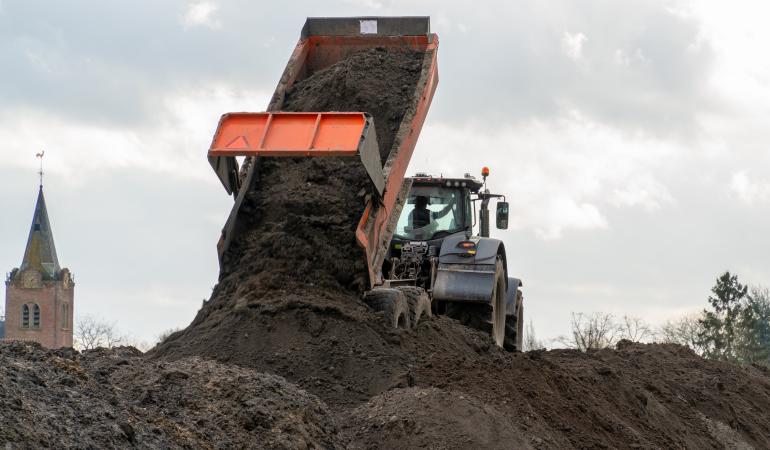
The Ministry of Infrastructure and Water Management wants to revise soil regulations in the coming years. Some of the existing standards and rules governing the reuse of secondary building materials, soil and dredged material are no longer up to date and they need to be reviewed. Moreover, more attention should be paid to the surroundings in which these materials are used. This is the outcome of two RIVM investigations into the obstacles and risks concerning the reuse of soil, dredged material and building materials. RIVM has made a number of recommendations for follow-up research in order to improve the relevant standards and rules.
The Netherlands has set a target of a circular economy by 2050. That is why materials left over from production processes are increasingly being reused as building materials. Examples of such materials are steel slag left over from steel production and concrete that is left behind after the demolition of old buildings. Residual soil and dredged material from production processes can also be reused, for example for the construction of roads and dykes. However, this must be done in a way that is safe for both humans and the environment. RIVM has investigated whether the rules and standards that govern the reuse of these materials are still accurate and which practical obstacles there are.
Adapting standards and rules to the latest insights
There are concerns in society about the safety of reusing secondary building materials, soil and dredged material. RIVM has concluded that the standards used in laws and regulations are obsolete. They take insufficient account of new materials and/or new ways to use them. In practice, undesirable environmental effects may occur if a material property or use deviates from policy principles. For soil and dredged material as well, the rules should be brought in line with the latest scientific insights.
Obstacles concerning secondary building materials
The existing standards for the use and reuse of building materials are insufficiently considerate of the exceptional properties that some building materials have. In addition, they are being used in thicker layers and larger quantities than expected. As a result, building materials can meet the standards while in practice being harmful to the environment.
Obstacles concerning soil and dredged material
As regards the use and reuse of soil and dredged material, the existing standards and rules are largely premised on chemical pollution. Assessing soil and dredged material against these standards will continue to be important. Furthermore, it is also important to ensure the well-being of plants and animals within soil and water systems, protecting groundwater and restoring biodiversity. More research is needed to ensure good soil quality in both the chemical and biological sense.
More research needed into new materials
RIVM recommends conducting further research into secondary building materials, soil and dredged material. When assessing building materials, it is important to consider the exceptional properties that they might have. In addition, RIVM recommends closer alignment between the respective standards for soil and groundwater and the inclusion of biological soil quality as a criterion in the assessment framework. Lastly, there is a need to map out which new materials in soil, dredged material and building materials could pose a risk to the environment, like for example PFAS. This can be achieved, in part, by establishing standards and rules for these materials.
Recommendations will form the basis for new policy
RIVM performed this obstacle analysis on behalf of the Ministry of Infrastructure and Water Management. In the coming years, the Ministry will review soil regulations to ensure that soil and groundwater will continue to be well protected in the future.